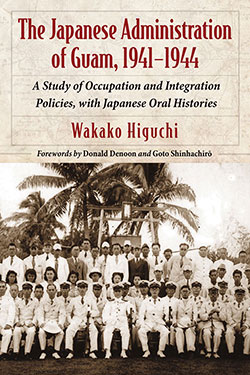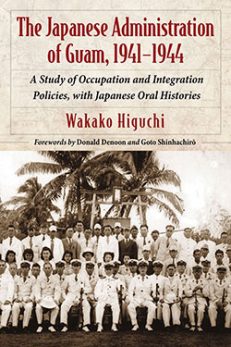The Japanese Administration of Guam, 1941–1944
A Study of Occupation and Integration Policies, with Japanese Oral Histories
$49.95
In stock
About the Book
During World War II, Guam was the only American territory where Japan “administered” the occupied local people. “Organic integration” was the purpose and goal of the Japanese Navy’s two and a half year administration of the local Chamorro people, but the navy’s attempts failed before U.S. reinvasion in July 1944. By emphasizing the extent of Japan’s Mandate in Micronesia, this book examines the Japanese Navy’s social, economic, and cultural approaches to “organic integration.” Using abundant primary data, the author gives a clear and verifiable picture of the whole occupation period and the Japanese ruling ideology for not only Guam but the entire region—and finds new ways to consider just why Japan went to war. Personal testimonies and documents are included to illustrate the Japanese mentality of war as it unfolded.
About the Author(s)
Bibliographic Details
Wakako Higuchi
Format: softcover (6 x 9)
Pages: 336
Bibliographic Info: 35 photos, 2 maps, appendices, notes, bibliography, index
Copyright Date: 2013
pISBN: 978-0-7864-3978-2
eISBN: 978-0-7864-9094-3
Imprint: McFarland
Table of Contents
Table of Contents
Acknowledgments vi
Foreword by Donald Denoon 1
Foreword by Goto¯ Shinhachiro¯ 3
Introduction 5
one • The Navy’s South Sea Islands Between the Wars 15
two • The Navy’s South Seas: Development of New Sphere Plans 31
three • The Guam Minseibu: The Japanese Navy’s Civil
Administration Department 44
four • The Minseibu: Political Integration into Japan 60
five • The Minseibu: Integration into the War Economy 83
six • The Minseibu: Cultural Integration into the Imperial Way 124
Conclusion 148
Glossary 151
Appendix I: Air Bases in the South Sea Islands (Before December
1941) 158
Appendix II: The Imperial Rescript on Education 160
Appendix III: Japanese Testimonies to the War Years on Guam 161
Appendix IV: Nakahashi Kiyoshi’s Letters 237
Chapter Notes 279
Bibliography 298
Index 323
Book Reviews & Awards
“The Japanese Occupation of Guam, 1941–1944 is rich in the details of the battle. The contribution of Dr. Wakako Higuchi’s study of the Minseibu is not to humanize or rationalize the behavior of the Japanese Naval civil administration. Instead, it helps fill a knowledge gap that has existed for far too long. For the people of Guam, her monumental work helps them comprehend the motivations of individuals who managed the daily lives of their parents and grandparents in the most dramatic time period of Guam’s history in the 20th century. It helps scholars understand the dynamics of how Japanese officials saw resources, loyalty and “race” during their imperial reach into the Pacific islands. This is a must read for any student of the Pacific War. It is a great contribution to our understanding of a troubled time period for Guam and provides insights into activities we have not previously explored in any detail.”—Robert A. Underwood was a former Guam delegate to the United States House of Representatives (1993–2003) and is president of the University of Guam; “The study of Japanese military administration during the Pacific War is an important work for elucidating why Japan went to the war and what Japan expected of people in each occupied area. With numerous primary documents, personal collections, and interviews with parties concerned, this leading thesis positively and carefully reveals the whole picture of Japan’s administration of Guam’s people. This reliable historical reconstruction of Guam’s wartime history is recommended to researchers of Micronesia, Asia and the Pacific studies.”—Ken’ichi Goto, Professor, Graduate School of Asia-Pacific Studies, Waseda University.





